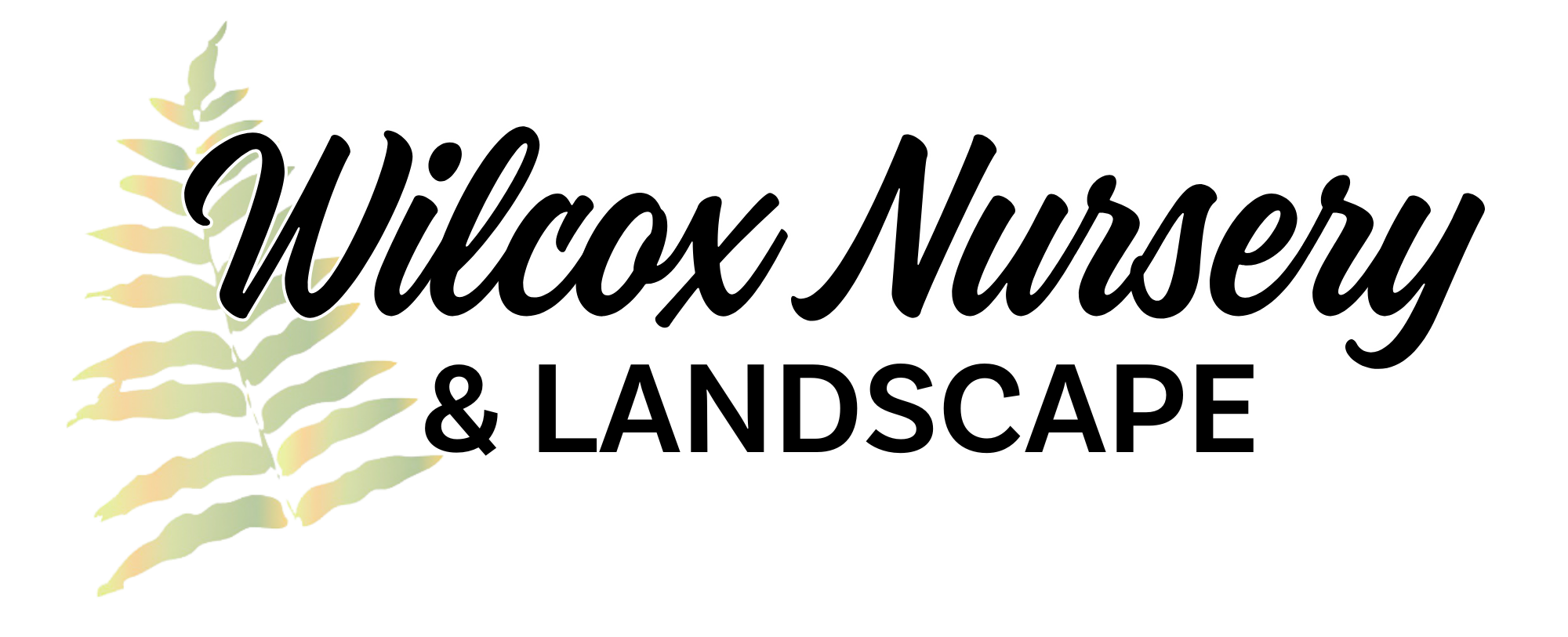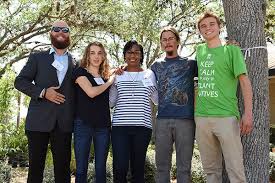Wilcox Nursery has spent 2023 focusing on the role of caterpillars in our ecosystem. Much of our focus has been on why and how you can attract butterflies and moths to your garden using native plants. One of the most visible ecological impacts of caterpillars is as a food source for birds. Caterpillars provide proteins, fats, and carotenoids that are essential for developing baby birds. Research from Doug Tallamey shows that as many as 96% of terrestrial birds in North America rely on insects to feed their nestlings. Each nest of Carolina Chickadees can eat 6,000 to 9,000 caterpillars during its time in the nest, hundreds per nest per day.
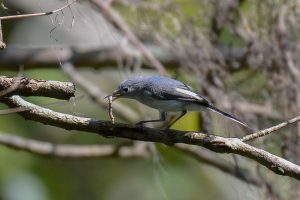
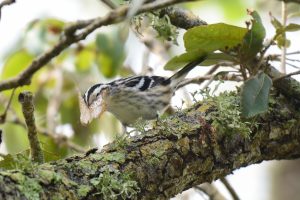
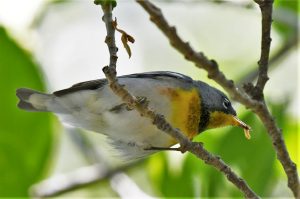
Birds touch our lives in many ways. They help control pests, such as mosquitoes, roaches, and rodents. Carrion-eating birds provide natural cleanup and disease prevention. Birds are pollinators, fertilizers, and seed dispersers. As one of the most visible types of wildlife, birds are also widely enjoyed by people. Birding boomed in popularity during the pandemic as we found ourselves stuck at home, finding more time to observe the wildlife right outside our windows.
The role of native plants in supporting the life cycles of Lepidoptera and birds cannot be understated. One study showed that non-native hedgerows had 98% less caterpillar biomass than a native hedgerow. Another study compared pairs of properties in which one was planted with mostly exotic and the other mostly native. The native yards had a higher number of caterpillars, more species of caterpillars, and a corresponding increase in bird numbers and diversity.
The most effective way to increase the biodiversity in your own landscape is to plant natives. Oak trees host over 500 species of moths and butterflies. There are smaller species of oaks that work better in urban and suburban areas than the classic Southern Live Oak. Underplanting with additional host plants that also provide cover offers a 2-for-1 for birds with food and shelter. Providing suitable nesting areas throughout the developed parts of Florida, we can start connecting the fragmented habitats.
Plants to Support Birds:
Sand Live Oak
- Host for: Oak hairstreak, Horace’s duskywing, Red-banded hairstreak, White-M hairstreak, and leafroller moths
- A medium to large tree growing from 25-75 feet high. This is an upland species and is the better choice over Southern Live Oak for properties that are very dry. These trees are well adapted to salt air tolerance in coastal settings as well as inland settings. It has a picturesque form and provides habitat for wildlife.
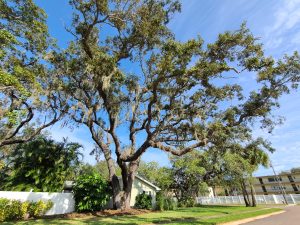
Myrtle Oak
- Host for: Horace’s duskywing, Red-banded Hairstreak, White-M hairstreak, and Leafroller moths
- A small-medium shrubby oak that ranges from 10- 15 feet, rarely up to 30 feet. Requires part to full sun and dry to extremely dry soil. The acorns are valuable to birds and mammals. This plant is ideal if you want to add an oak for the wildlife value but have limited space. The oldest known individuals are over 1,000 years old!
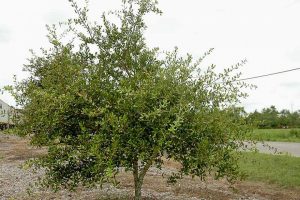
Green Buttonwood
- Host for: Martial Scrub Hairstreak and Tantalus Sphinx Moth
- A large, broadleaf, evergreen shrub or medium-sized tree naturally occurring in coastal settings. Highly wind and salt tolerant. This species can be low and spreading with twisted limbs or trained into an upright multiple trunk or single trunk tree up to 40 feet in height. It can also be used as a screening or enclosure shrub. Small creamy white flowers precede dry seeds that are clustered to give it the appearance of coat buttons.Tolerant of inundation with salt water.
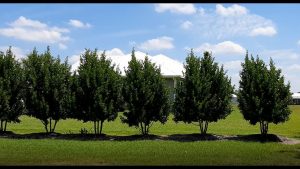
Fiddlewood
- Host for: Fiddlewood Leafroller Moth
- A fast growing, tropical native shrub or small tree. It has large, glossy, deep green leaves. The sprays of white, beautifully fragrant flowers are produced throughout the warm months, and are very graceful dripping from the branch tips. They attract butterflies and other pollinators. Birds readily use the fruit of this beautiful plant. Fiddlewood can grow from 8 feet to 18 feet and is quite broad in shape.
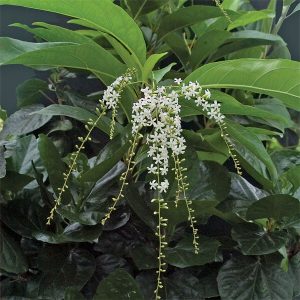
Spanish Bayonet
- Host for: Yucca Giant Skipper and Cofaqui Giant Skipper
- A long-lived shrub that blooms typical, showy yucca flowers in spring. It makes a showy specimen but beware of the sharp edges. Natural found in very dry, sandy soils. It prefers full sun but can tolerate shade. They slowly grow to 10 to 15 high and 3 to 6 feet wide.

Canna Lily
- Host for: Brazilian Skipper
- A deciduous wetland wildflower growing 3 to 6 feet tall. Prefers full to part sun and requires a consistently moist soil to thrive. They bloom with wonderful yellow flowers in late Spring and early Summer. Provides habitat for dragonflies and other insects. Plant them near the edges of a pond or other moist areas of the landscape for a beautiful show of flowers.
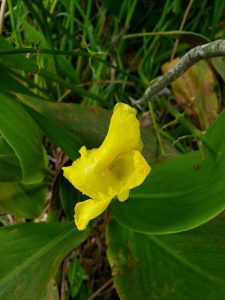
Creeping Sage
- Host for: Fulvous Hairstreak
- A perennial ground cover that can spread 3-4 feet or more on wiry stems. Useful ground cover that is very adaptable, but prefers moist soil and will grow in sun or shade.The bright green foliage is great for brightening shadowy or dark areas of a landscape. It can be trimmed to provide a neater appearance. Consider as an alternative to asiatic jasmine.
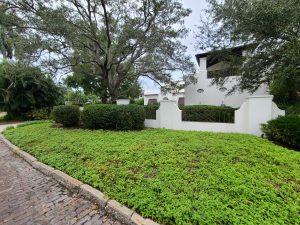
For more information, see our “Gardening for Birds” handout.
By Nikki Bales
